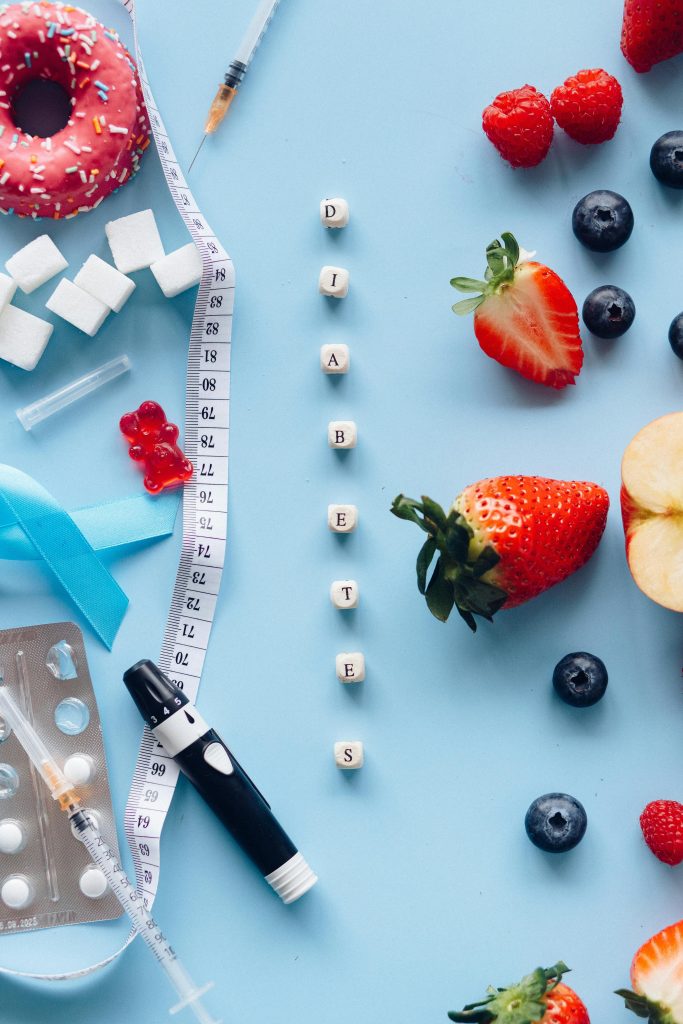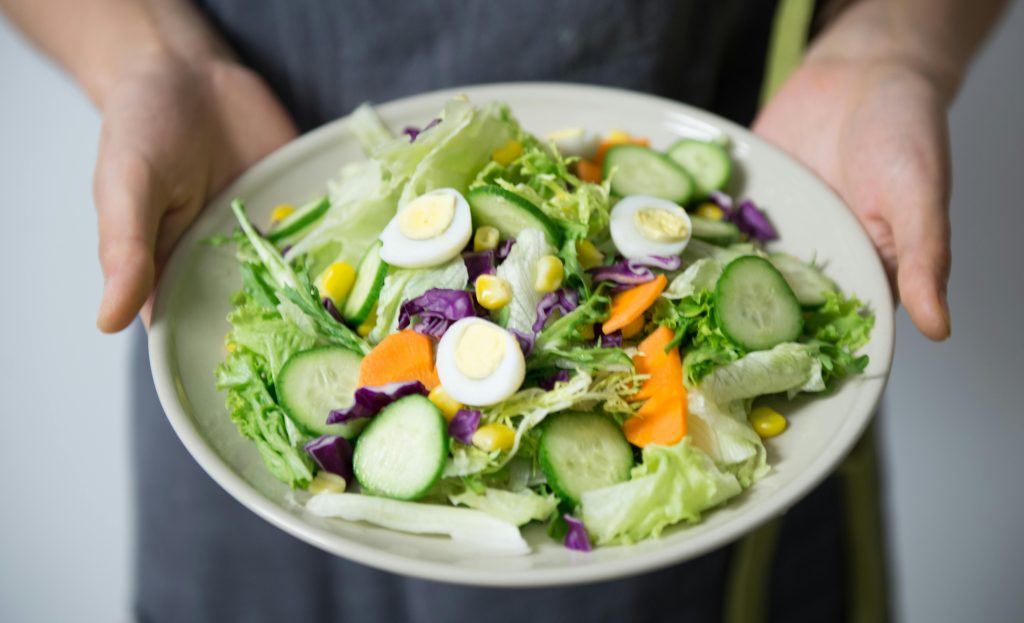What is the Diabetic Diet, Really
Let’s get one thing straight right away: the diabetic diet isn’t about giving up everything you love. It’s not about bland food and constant cravings. In fact, that’s probably the biggest misconception about it! Instead, the diabetic diet, or more accurately, diabetic meal planning, is all about making smart food choices that help you manage your blood sugar levels. It’s about nourishing your body with the right things, in the right amounts, at the right times.
Now, you might be asking, “what is a diabetic diet, exactly?” Simply put, it’s a way of eating that focuses on whole, unprocessed foods, balanced meals, and portion control. It’s a healthy eating plan that everyone can benefit from, not just people with diabetes.
We need to talk about the different types of diabetes, because diet plays a slightly different role in each. You’ve got Type 1 diabetes, where your body doesn’t produce insulin. You’ve got Type 2 diabetes, where your body either doesn’t produce enough insulin or doesn’t use it effectively. Then there’s gestational diabetes, which develops during pregnancy, and prediabetes, which is a precursor to Type 2. No matter which type we’re talking about, what is the diabetic diet’s main goal? It’s all about keeping your blood sugar levels in a healthy range.
So, if you’re ready to take control of your health and understand this whole diabetic diet thing, you’re in the right place. This guide will break down everything you need to know about the diabetic diet explained in simple terms, from what to eat to what to avoid. We’ll cover diabetic diet basics and give you a diabetic diet guide to get you started.
Understanding the Basics: “Diabetic Diet Explained”
Let’s get down to the nitty-gritty. Why is food so important when it comes to diabetes? Well, think of it like this: your body turns the food you eat into glucose, which is a type of sugar. This glucose is your body’s main source of energy. Insulin, a hormone produced by your pancreas, helps glucose get from your bloodstream into your cells, where it can be used for energy.
If you have diabetes, your body either doesn’t make enough insulin or can’t use the insulin it makes effectively. This means glucose can’t get into your cells, and it builds up in your blood. High blood sugar levels can lead to all sorts of health problems. That’s where the diabetic diet comes in.
What is a diabetic diet meal, then? It’s a meal that’s designed to keep your blood sugar levels stable. It usually includes a balance of carbohydrates, protein, and healthy fats. Carbohydrates are what get broken down into glucose, so it’s important to choose complex carbs (like whole grains, fruits, and vegetables) over simple carbs (like white bread, sugary drinks, and processed foods). Protein helps slow down the absorption of carbs, and healthy fats help you feel full and satisfied.
One of the most important things to understand about the diabetic diet is portion control. Even healthy foods can raise your blood sugar if you eat too much of them. Meal timing is also important. Eating regular meals and snacks throughout the day helps prevent blood sugar spikes and crashes.
You might have heard about the Glycemic Index (GI). It’s a ranking system for foods based on how quickly they raise your blood sugar levels. Foods with a low GI are digested and absorbed more slowly, which leads to a gentler rise in blood sugar. Foods with a high GI are digested and absorbed quickly, causing a rapid spike in blood sugar. Paying attention to the GI of foods can be helpful for managing diabetes.
Now, we’ve covered the basics of the diabetic diet. We’ve talked about what it is, why it’s important, and how it works. In the next section, we’ll dive into the specifics of what foods you should be eating and which ones you should limit or avoid.

Foods for Diabetics: “The Good Stuff”
One myth I often hear is that people with diabetes can’t enjoy food. Totally wrong! The diabetic diet is packed with delicious and nutritious options. It’s about making smart choices, not about deprivation. So, what can you eat on a diabetic diet? A whole lot! The focus is on whole, unprocessed foods. These are foods in their natural state, or as close to it as possible.
Let’s break down the recommended food groups:
- Fruits: Yes, you can still enjoy fruit! The key is to choose fruits with a lower GI, like berries, apples, and pears. Portion control is important here, too. A good tip is to pair fruit with some protein or healthy fat to help slow down the absorption of sugar. Think apple slices with a handful of almonds, for example.
- Vegetables: Load up on those non-starchy veggies! They’re packed with vitamins, minerals, and fiber, and they’re low in calories and carbs. Think leafy greens (spinach, kale), broccoli, carrots, peppers, and so much more. The more colorful your plate, the better!
- Whole Grains: Choose whole grains over refined grains whenever possible. Whole grains contain all parts of the grain kernel, including the bran, germ, and endosperm. This provides more fiber, which is important for blood sugar control. Examples include whole-wheat bread, brown rice, quinoa, and oats.
- Lean Proteins: Protein is your friend! It helps you feel full and satisfied, and it doesn’t raise your blood sugar levels. Good sources of lean protein include chicken, fish, turkey, beans, lentils, and tofu.
- Healthy Fats: Don’t be afraid of fat! Healthy fats are essential for good health. They help you absorb nutrients, and they can help you feel full. Good sources of healthy fats include avocados, nuts, seeds, and olive oil.
To make it even easier, here’s a quick diabetic food list you can refer to:
- Fruits: Berries (strawberries, blueberries, raspberries), apples, pears, oranges, grapefruit.
- Vegetables: Spinach, kale, broccoli, carrots, peppers, tomatoes, cucumbers, asparagus.
- Whole Grains: Brown rice, quinoa, oats, whole-wheat bread, whole-grain pasta.
- Lean Proteins: Chicken breast, fish (salmon, tuna), turkey breast, beans, lentils, tofu.
- Healthy Fats: Avocados, almonds, walnuts, chia seeds, flax seeds, olive oil.
Remember, this is just a starting point. There are many other delicious and healthy foods you can enjoy on a diabetic diet. For more ideas, check out our diabetic diet recipes (link to your recipe blog post here!). We also have diabetic breakfast ideas, diabetic lunch ideas, and diabetic dinner ideas to help you plan your meals. And don’t forget about diabetic snacks to keep your blood sugar stable between meals.
Foods to Avoid with Diabetes: “Steer Clear Of These”
Just as there are foods that are great for managing diabetes, there are also foods that can make it harder. These are the foods you should limit or avoid:
- Refined Carbs: These are carbs that have been processed and stripped of their nutrients and fiber. They tend to cause rapid spikes in blood sugar. Examples include white bread, white rice, pasta, pastries, and sugary cereals.
- Sugary Drinks: Soda, juice, and sweetened beverages are loaded with sugar and can cause dramatic blood sugar increases. They also provide empty calories, meaning they don’t offer much nutritional value.
- Processed Foods: Processed foods are often high in unhealthy fats, sodium, and added sugars. They can also be low in fiber and nutrients. Examples include chips, crackers, processed meats, and frozen meals.
- Excessive Saturated and Trans Fats: These unhealthy fats can increase your risk of heart disease, which is a common complication of diabetes. They’re often found in fried foods, processed foods, and red meat.
So, what are some specific examples of the worst foods for diabetics? Here are a few to watch out for:
- Sugary drinks (soda, juice, sweetened tea)
- White bread, white rice, pasta
- Pastries, cakes, cookies
- Candy
- Fried foods
- Processed meats (bacon, sausage, hot dogs)
It’s important to remember that the diabetic diet isn’t about complete restriction. It’s about making smart choices most of the time. If you occasionally indulge in a treat, that’s okay. The key is to maintain balance and focus on eating healthy foods most of the time.
Creating Your Diabetic Meal Plan: “Putting it All Together”
Now that you know what to eat and what to avoid, let’s talk about putting it all together into a meal plan. Creating a diabetic meal plan for a week can seem daunting, but it doesn’t have to be. Think of it as a roadmap for your meals, helping you stay on track and manage your blood sugar levels.
If you’re a diabetic diet plan for beginners, start simple. Don’t try to overhaul your entire diet overnight. Instead, make small, gradual changes. For example, you could start by swapping out sugary drinks for water or unsweetened tea. Or you could try adding more vegetables to your meals.
A diabetic diet sample menu might look something like this:
- Breakfast: Oatmeal with berries and nuts, or scrambled eggs with whole-wheat toast.
- Lunch: Salad with grilled chicken or fish, or a lentil soup with a side of whole-grain bread.
- Dinner: Baked salmon with roasted vegetables, or a stir-fry with brown rice and tofu.
- Snacks: A handful of almonds, a piece of fruit, or some Greek yogurt.
A diabetic diet chart or diabetic food guide can be a helpful visual tool. It can help you see at a glance which foods are recommended and which ones to limit. You can find many of these resources online, or you can create your own.
If weight loss is a goal, you can create a diabetic diet for weight loss plan. The principles are the same – focus on whole foods, portion control, and balanced meals. But you might need to adjust your calorie intake to create a calorie deficit. It is also important to note that diabetic diet for prediabetes and how to reverse it is usually the same as a general diabetic diet, with emphasis on weight loss if needed.
For those with diabetic diet for gestational diabetes or needing a diabetic diet breakfast for gestational diabetes, it’s crucial to consult with a doctor or registered dietitian. They can help you create a meal plan that meets your specific needs and ensures the health of both you and your baby. The same applies to a diabetic diet for type 2 diabetes or a diabetic diet for type 1 diabetes; while the core principles are similar, there might be nuances based on the type of diabetes. Similarly, diabetic diet for children and a diabetic diet plan for seniors might require adjustments based on age and other health considerations.
Managing Diabetes with Diet: “Beyond the Plate”
The diabetic diet and how does it affect blood sugar? Directly! What you eat has a huge impact on your blood sugar levels. By making smart food choices, you can keep your blood sugar in a healthy range and prevent complications. Controlling blood sugar with diet is one of the cornerstones of diabetes management.
Diabetes and nutrition go hand in hand. A healthy diet provides your body with the nutrients it needs to function properly. It can also help you manage your weight, lower your risk of heart disease, and improve your overall health. Diabetic diet and exercise are also crucial. Combining a healthy diet with regular physical activity can help you improve your insulin sensitivity and manage your blood sugar levels more effectively.
Is the diabetic diet healthy? Absolutely! In fact, the benefits of diabetic diet extend far beyond blood sugar control. It can help you improve your heart health, reduce your risk of certain cancers, and boost your energy levels. Are there risks of diabetic diet? Generally, no, as long as you are eating a balanced diet and working with your doctor or a registered dietitian. The diabetic diet recommendations are in line with general healthy eating guidelines.

Tips and Resources: “Your Diabetic Diet Toolbox”
Now that you have a good understanding of the diabetic diet, let’s talk about some practical tips for how to follow a diabetic diet and stick with it:
- Plan your meals: Planning your meals ahead of time can help you make healthier choices and avoid impulsive eating.
- Read food labels: Pay attention to serving sizes, carbohydrates, and added sugars.
- Cook at home: Cooking at home gives you more control over ingredients and portion sizes.
- Be mindful of carbs: Choose complex carbs over simple carbs, and watch your portion sizes.
- Stay hydrated: Drink plenty of water throughout the day.
- Don’t skip meals: Skipping meals can lead to blood sugar swings.
- Listen to your body: Pay attention to your hunger and fullness cues.
- Find support: Connect with other people with diabetes, either online or in person.
- Work with a healthcare professional: A registered dietitian or certified diabetes educator can help you create a personalized meal plan and provide ongoing support.
Here are some more diabetic diet tips and diabetic diet facts to keep in mind:
- It’s okay to have treats occasionally, but make sure they fit into your overall meal plan.
- Don’t be afraid to experiment with new recipes and foods.
- Focus on progress, not perfection.
- Be patient with yourself. It takes time to develop new habits.
There are also many resources available to help you on your journey. Here are a few to get you started:
- Diabetic diet research / Diabetic diet studies: Look for reputable sources of information, such as the American Diabetes Association (ADA) and the National Institute of Diabetes and Digestive and Kidney Diseases (NIDDK).
- Diabetic diet recommendations: The ADA provides evidence-based recommendations for diabetic meal planning.
- Diabetic diet resources / Where to find diabetic diet information / Diabetic diet online: There are many websites, blogs, and online communities dedicated to diabetes.
- Diabetic diet community / Support for diabetic diet / Living with diabetes diet / Understanding the diabetic diet: Connecting with others who have diabetes can provide support and motivation.
- Diabetic diet meal delivery / Diabetic diet books / Diabetic diet apps: There are also many helpful tools and services available, such as meal delivery services, cookbooks, and apps.
Remember, you’re not alone in this. There are many people who have successfully managed their diabetes through diet and lifestyle changes. With the right information and support, you can too.
Conclusion: “You’ve Got This!”
So, what is the diabetic diet? It’s not about deprivation or restriction. It’s about making smart food choices that help you manage your blood sugar, improve your health, and live your best life. It’s about nourishing your body with delicious, healthy foods.
Remember the key takeaways: focus on whole, unprocessed foods, watch your portion sizes, and be mindful of carbs. Plan your meals, stay hydrated, and don’t skip meals. And most importantly, work with a healthcare professional to create a personalized plan that meets your individual needs.
You’ve got this! With a little planning and effort, you can successfully manage your diabetes through diet and enjoy a healthy, fulfilling life



One Response